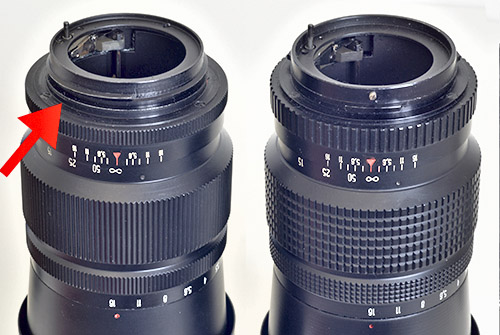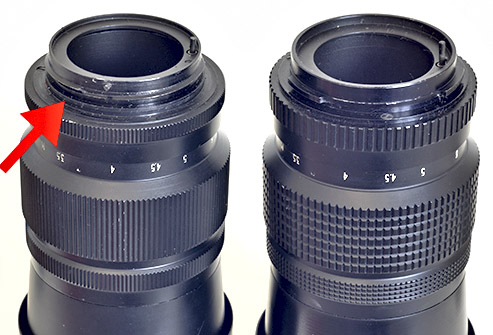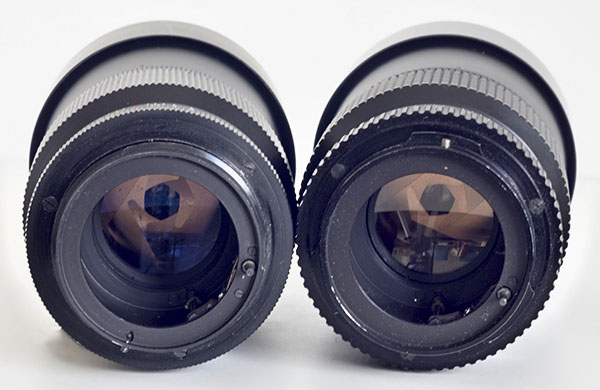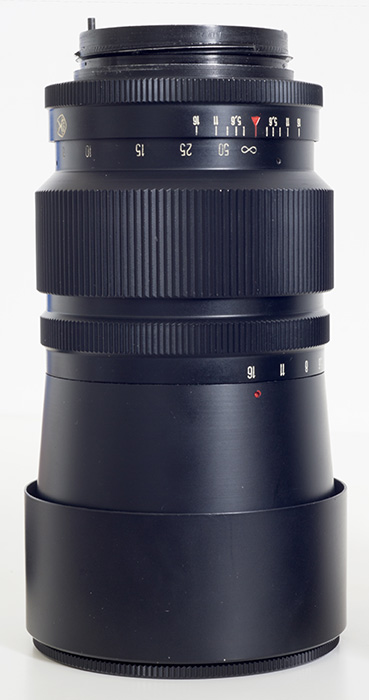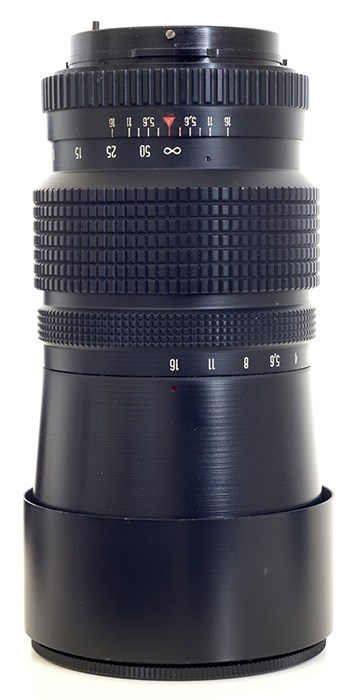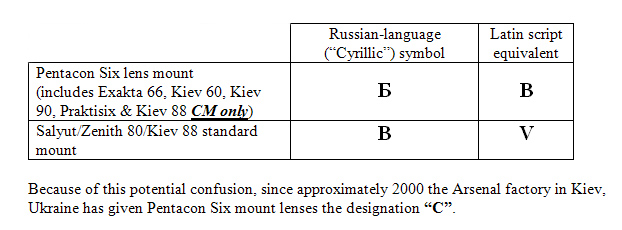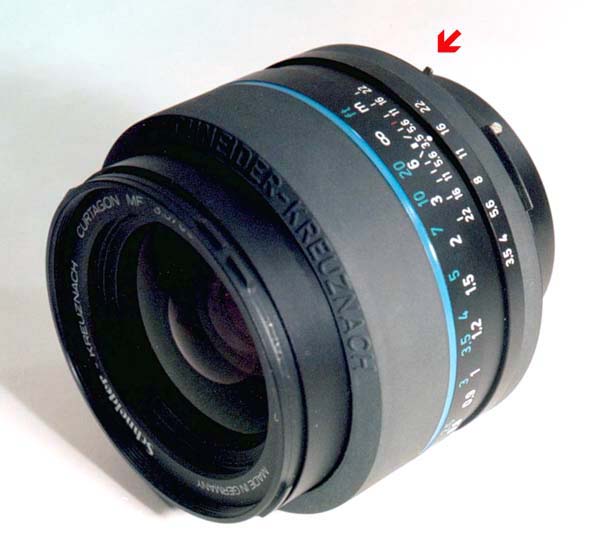|
Medium Format Lenses with the Pentacon
Six Mount
by TRA Lens mount Compatibility The Pentacon Six lens mount was designed by the company KW in eastern Germany in the mid 1950s. It is, unchanged, the mount that they designed for the Praktisix camera. That mount was based on an upscaled version of the mount designed for the Praktina 35mm camera. Details of this can be seen here. Over the years, many manufacturers have made lenses that purported to be in this mount, although in some cases (principally, with lenses from the Soviet Union and the former Soviet Union!) manufacturing tolerances have been poor or the implementation has been less than accurate or even deliberately slightly different. This can lead to unexpected difficulties in mounting some lenses on the Pentacon Six or on some of the other cameras that claim to have adopted the Pentacon Six lens mount. This page aims to explain the possible problems, along with some other pages to which there are links on this page. The full implementation of the specification has the following components:
Lenses from Carl Zeis Jena and Meyer-Optik All Zeiss lenses fully implemented this specification. The Meyer-Optik / Pentacon lenses accurately implemented the details of the mount but did not have a fully-automatic diaphragm, so there was no retracting pin within the rear of the lens to open up the aperture and to stop it down when the camera shutter was fired. However, all “Pentacon” lenses in the Pentacon Six mount can be mounted on Pentacon Six cameras with no problems at all. Lenses from Arsenal in Kiev, Ukraine and some other factories in the former Soviet Union In his book “Made in USSR: The Authentic Guide to Russian and Soviet Cameras”, Jean Loup Princelle reports (on page 222) that in 1957 the Arsenal factory started manufacturing a medium format camera that was a virtual “clone” of the Hasselblad 1600F and then of the Hasselblad 1000F camera. They called it the “Salyut”. A version that was imported to the UK was called the “Zenith-80”, and it subsequently had various other names, including “Kiev 80” and “Kiev 88”. This camera has a mount that is totally incompatible with the Pentacon Six. Over the next approximately 30 years, the same factory developed and manufactured a range of lenses for the Salyut and its successors. From about 1971 (Princelle, p. 225), Arsenal started producing a medium format camera that they named the “Kiev 6C”. (See further information here.) A revised version of this camera, produced from about 1984, was named the “Kiev 60”. (See further information here.) The Soviets advertised this camera as having a Pentacon Six mount. To provide lenses for this camera “all” that they needed to do was to make a series of the lenses that they already had for the Salyut/Zenith-80/Kiev080/Kiev-88, but with a Pentacon Six lens mount. This is where the problems start. There are two potential sources of problems:
The design of the automatic diaphragm mechanism on Arsenal lenses is slightly different from the original Pentacon Six standard (which is fully implemented by Joseph Schneider). The pin on the back of all these the lenses should remain fully depressed when the shutter is cocked, for maximum viewing screen brightness and focussing accuracy. When the shutter is released, a lever in the camera moves back, allowing the pin to move out of the lens, stopping the lens down to the selected aperture. In the Arsenal implementation, this pin seems to retract slightly into the lens as the lens is opened. In practice, this may mean that at an aperture 1 – 1 ½ stops before maximum, the pin is not long enough to be fully depressed by the lever in the camera body. The result? If you are using an f/2.8 lens at, say, f/8, the lever in the camera body may only open the lens to f/4, giving you a less bright viewfinder image. A screw in the lever inside the camera is adjustable in the Pentacon Six, Exakta 66 and Kiev 60 (with difficulty!), and with a lot of fiddling it may be possible to adjust this to give both full opening and full stopping-down with all lenses. In my Kiev 88 “B.i.G.” camera that is advertised as having a “Pentacon Six mount”, the pin on the lenses rests on a curved arc just in front of the mirror. I can’t see how to adjust this. Worse, some Kiev 88 users have experienced problems with the pin pushing back the lever, which in turn pushes back the mirror, resulting in a focusing error. I have not experienced this particular problem with my camera.
To make matters worse, the differences between the Cyrillic alphabet used for Russian and the Roman or Latin alphabet used for English and (with additions) other western languages, can lead to serious errors. The following table explains:
You can see an example of a 2×
converter from the FSU with the Kiev 60/Pentacon Six
mount, labelled “Б” here. Subsequently, some FSU lenses with
the Pentacon Six mount were labelled “C”, which is
of course the Cyrillic alphabet form of the Roman or
Latin alphabet “S”, which
may have been chosen to refer to the Pentacon Six. You can find more information on
mounts here
and here.
Lenses
from Joseph Schneider of Bad Kreuznach However, most of the Schneider lenses for the Exakta 66 also have another pin towards the back of the lens, and this pin can make it impossible to mount these lenses on versions of the Kiev 88 that have been modified to have a mount that is supposedly compatible with the Pentacon Six.
Kiev 88
cameras modified “to take Pentacon Six lenses” The “flange” or “register” distance is the distance between the front face of a camera against which the base of the lens mount rests and the film. For the Hasselblad 1600/1000F and the Kiev 88 based on it, this distance is reported to be 82.10 mm. The flange distance for the Pentacon Six and therefore of all lenses designed to be used on it is reported to be 8mm less: 74.10 mm. (According to some reports, the Pentacon Six flange register distance is 74.90mm, but in either case, the same problem will remain.) The flange register distances do not include components which pass freely inside the “throat” of the mount, such as the ring which holds the three tabs on Pentacon Six lenses. Therefore, when a Kiev 88 camera is modified to take Pentacon Six lenses, the new mount has to be recessed within the front of the camera body. Though – by definition – Kiev 88 cameras with Pentacon Six lens mounts take Pentacon Six lenses, this does not mean that there won’t be problems, as explained above in the case of Joseph Schneider lenses that were designed for the Exakta 66 – although in that case the cause of the problem was the modification of the Pentacon Six mount specification by Schneider, when they added the maximum aperture pin for the TTL meter. However, there can even be a problem mounting some Carl Zeiss Jena lenses on a Kiev 88 “with a Pentacon Six mount”! The depth-of-field lever on the 50mm and 65mm Flektogon lenses is very small and located right at the back of the lens. This lever is easily accessible when these lenses are mounted on the Pentacon Six, the Exakta 66 or the Kiev 60. But when they are mounted on a modified Kiev 88, it is at best difficult to reach and at worst may rub with the camera mount or even make mounting the lens difficult. See further information on this and possible solutions here. For the same reason, it is reported that it is not possible to mount the 1000mm Carl Zeiss Jena mirror lens onto the Kiev 88CM. See more information here.
Incompatibility
problems with tilt and shift lenses There are also some incompatibilities
when using tilt and shift lenses with the Pentacon Six
and Exakta 66. See details here. To go on to the next section, click below. To go back to the beginning of the lens tests,
click below and then choose the focal length that you
want to read about. © TRA January 2002, latest revision: July 2023 |
